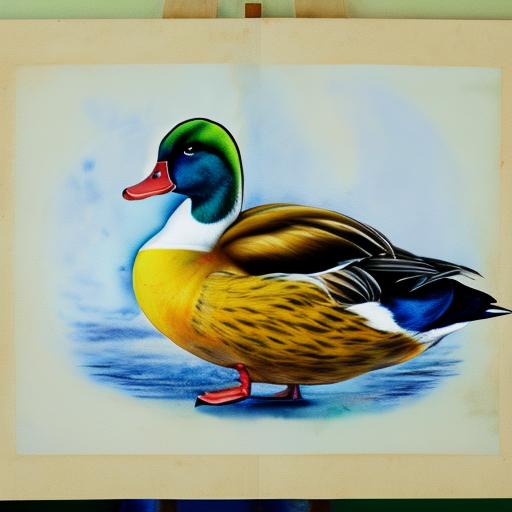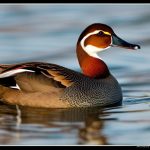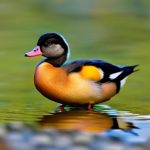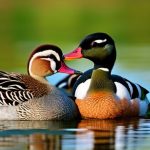Cold hardy duck breeds are a popular choice for many poultry enthusiasts, especially those living in colder climates. These breeds are known for their ability to withstand harsh winter conditions, making them an ideal choice for those looking to raise ducks in colder regions. Cold hardy duck breeds are not only resilient in cold weather, but they also offer a variety of benefits to their owners, making them a valuable addition to any homestead or farm.
Key Takeaways
- Cold hardy duck breeds are well-suited for colder climates and can thrive in harsh winter conditions.
- These duck breeds have unique characteristics such as thick, insulating feathers and a high tolerance for cold temperatures.
- Popular cold hardy duck breeds include the Pekin, Khaki Campbell, and Swedish Blue, known for their ability to withstand cold weather.
- Care and maintenance of cold hardy duck breeds involves providing adequate shelter, access to unfrozen water, and a balanced diet to support their cold weather resilience.
- Raising cold hardy duck breeds can provide benefits such as sustainable meat and egg production, pest control, and a unique addition to a small farm or homestead.
Characteristics of Cold Hardy Duck Breeds
Cold hardy duck breeds are known for their ability to thrive in cold weather conditions. These breeds have developed thick, insulating feathers that help them stay warm and dry even in the coldest of temperatures. Additionally, cold hardy duck breeds often have a layer of subcutaneous fat that helps them regulate their body temperature and stay warm during the winter months. Their sturdy, compact bodies also help them conserve heat and energy, making them well-suited for colder climates.
In addition to their physical characteristics, cold hardy duck breeds are also known for their hardiness and resilience. These ducks are able to forage for food even in snow-covered landscapes, making them a practical choice for those living in areas with long, harsh winters. Their adaptability and ability to thrive in challenging conditions make them a popular choice for many duck enthusiasts.
Popular Cold Hardy Duck Breeds
There are several popular cold hardy duck breeds that are well-suited for colder climates. One of the most well-known cold hardy duck breeds is the Pekin duck. Pekin ducks are known for their large size, white feathers, and friendly disposition. They are also highly adaptable and can thrive in a variety of climates, including cold weather regions.
Another popular cold hardy duck breed is the Khaki Campbell. Khaki Campbells are known for their excellent egg-laying abilities, making them a practical choice for those looking to raise ducks for their eggs. They are also known for their hardiness and ability to withstand cold temperatures, making them a popular choice for those living in colder regions.
The Buff Orpington is another popular cold hardy duck breed known for its gentle nature and ability to thrive in cold weather. These ducks have beautiful buff-colored feathers and are known for their calm and friendly disposition, making them a favorite among many duck enthusiasts.
Care and Maintenance of Cold Hardy Duck Breeds
When it comes to caring for cold hardy duck breeds, there are a few key considerations to keep in mind. Providing adequate shelter is essential for cold hardy duck breeds, especially during the winter months. A well-insulated coop or shelter can help protect ducks from harsh weather conditions and keep them warm and dry.
In addition to shelter, it’s important to provide cold hardy duck breeds with a balanced diet that meets their nutritional needs, especially during the winter months when foraging may be more challenging. Supplementing their diet with grains, vegetables, and high-quality duck feed can help ensure that they receive the nutrients they need to stay healthy and maintain their energy levels during the colder months.
Regular health checks are also important when caring for cold hardy duck breeds. Monitoring their overall health and addressing any potential issues promptly can help prevent illness and ensure that they remain strong and resilient in cold weather conditions.
Benefits of Raising Cold Hardy Duck Breeds
There are numerous benefits to raising cold hardy duck breeds, especially for those living in colder climates. One of the main benefits of raising cold hardy duck breeds is their ability to thrive in cold weather conditions. Their resilience and adaptability make them a practical choice for those looking to raise ducks in regions with long, harsh winters.
Cold hardy duck breeds also offer a valuable source of eggs and meat for their owners. Many cold hardy duck breeds are excellent egg layers, providing a reliable source of fresh eggs throughout the year. Additionally, ducks raised for meat can provide a sustainable source of protein for their owners, making them a valuable addition to any homestead or farm.
In addition to their practical benefits, raising cold hardy duck breeds can also be a rewarding experience for many poultry enthusiasts. These ducks often have friendly and sociable dispositions, making them enjoyable to interact with and care for. Their unique personalities and behaviors can bring joy and entertainment to those who raise them.
Challenges of Raising Cold Hardy Duck Breeds
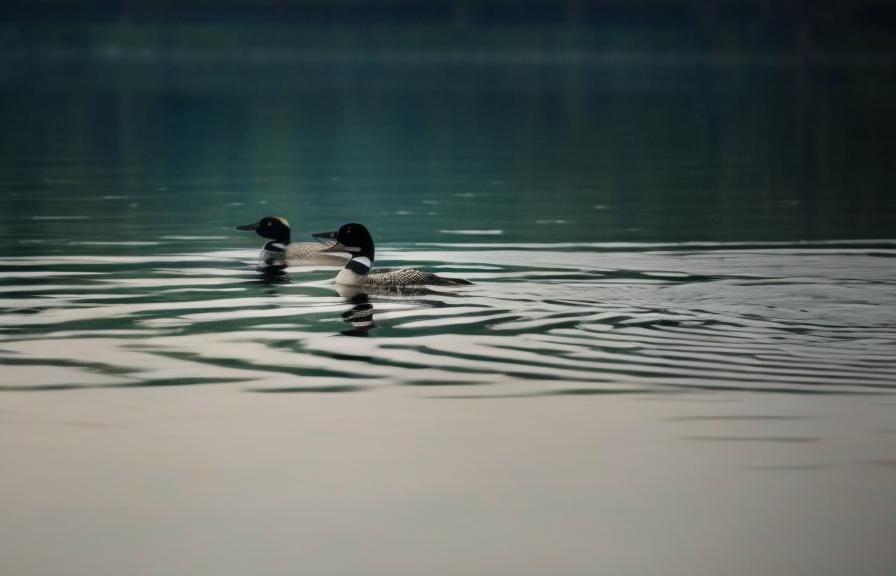
While there are many benefits to raising cold hardy duck breeds, there are also some challenges to consider. One of the main challenges of raising cold hardy duck breeds is providing adequate shelter and protection from harsh weather conditions. In colder climates, it’s essential to ensure that ducks have a well-insulated coop or shelter to keep them warm and dry during the winter months.
Another challenge of raising cold hardy duck breeds is ensuring that they receive a balanced diet that meets their nutritional needs, especially during the winter months when foraging may be more challenging. Supplementing their diet with high-quality feed and ensuring access to fresh water can be more challenging in colder climates.
Additionally, predators can pose a threat to cold hardy duck breeds, especially during the winter months when food sources may be scarce. Protecting ducks from potential predators requires careful planning and implementation of effective predator control measures.
Conclusion and Recommendations for Cold Hardy Duck Breeds
In conclusion, cold hardy duck breeds are an excellent choice for those looking to raise ducks in colder climates. Their resilience, adaptability, and practical benefits make them a valuable addition to any homestead or farm. When caring for cold hardy duck breeds, it’s important to provide adequate shelter, a balanced diet, and regular health checks to ensure that they remain healthy and strong throughout the year.
For those considering raising cold hardy duck breeds, it’s important to research the specific needs and characteristics of different breeds to determine which ones are best suited for their climate and lifestyle. With proper care and attention, cold hardy duck breeds can thrive in colder climates and provide their owners with a valuable source of eggs, meat, and enjoyment.
If you’re interested in raising cold hardy duck breeds, you may also want to explore the topic of turkey breeding. Poultry Wizard offers a comprehensive article on the mating season for turkeys, providing valuable insights for poultry enthusiasts. Whether you’re considering ducks or turkeys, Poultry Wizard is a go-to resource for all your poultry-related queries. Check out their website for more information on keeping chickens and determining the ideal number of chickens for a family of four. Learn more about turkey breeding here.
FAQs
What are cold hardy duck breeds?
Cold hardy duck breeds are types of ducks that are able to withstand and thrive in cold climates. These breeds have adapted to colder temperatures and are able to survive and even lay eggs during the winter months.
What are some examples of cold hardy duck breeds?
Some examples of cold hardy duck breeds include the Pekin, Khaki Campbell, Swedish, Buff, and Cayuga ducks. These breeds are known for their ability to handle cold weather and are popular choices for backyard duck keepers in colder regions.
What characteristics make a duck breed cold hardy?
Cold hardy duck breeds typically have thick, insulating feathers, a layer of subcutaneous fat for warmth, and a small comb and wattles to reduce the risk of frostbite. They also have a higher metabolism and are able to maintain body temperature in colder conditions.
How can I care for cold hardy duck breeds in the winter?
To care for cold hardy duck breeds in the winter, provide them with a draft-free shelter, plenty of bedding for warmth, and access to unfrozen water. Feeding them a high-energy diet and ensuring they have access to fresh, clean water will also help them stay healthy during the winter months.
Can cold hardy duck breeds be kept in warmer climates?
Yes, cold hardy duck breeds can be kept in warmer climates, but they may not be as well-suited to the heat as they are to the cold. It’s important to provide them with shade, plenty of water, and a well-ventilated shelter to help them stay comfortable in warmer temperatures.
Meet Walter, the feathered-friend fanatic of Florida! Nestled in the sunshine state, Walter struts through life with his feathered companions, clucking his way to happiness. With a coop that’s fancier than a five-star hotel, he’s the Don Juan of the chicken world. When he’s not teaching his hens to do the cha-cha, you’ll find him in a heated debate with his prized rooster, Sir Clucks-a-Lot. Walter’s poultry passion is no yolk; he’s the sunny-side-up guy you never knew you needed in your flock of friends!

